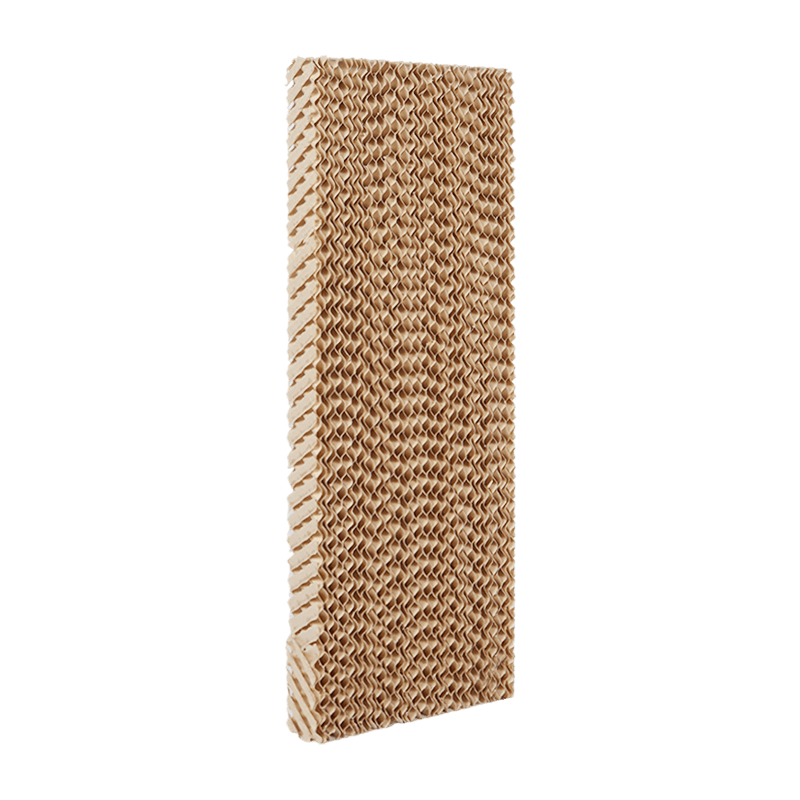Evaporative Cooler Pads Manufacturer
As a professional OEM Wet Curtain Paper Manufacturer and ODM Humidification curtain Factory, The evaporative wet curtain produced by the company has good water absorption and ventilation, strong cooling ability, long service life, and sterilization and algae prevention functions. It has been successfully applied in industrial plants with high-temperature operations such as evaporative air conditioners, evaporative cooling fans, humidifiers, animal husbandry, the greenhouse industry, the textile industry, hardware, as well as in public places such as shopping malls, internet cafes, supermarkets, etc., which can effectively improve indoor air quality, To prevent the spread of diseases caused by the use of air and truly achieve green environmental protection, energy conservation and emission reduction.
-
In the sweltering summer, evaporative cooling fans are often a popular choice when looking for economical and efficient cooling solutions. How Evapora...
READ MORE -
As summer temperatures rise, many consumers are seeking cooling solutions that are more energy-efficient and environmentally friendly than traditional...
READ MORE -
In the hot summer, efficient evaporative cooling systems are key to maintaining suitable temperatures in many industrial, agricultural, and commercial...
READ MORE -
In the sweltering summer, when we search for efficient and energy-saving cooling solutions, the names air coolers and Evaporative Air Cooler (commonly...
READ MORE
1. Material Types
Cellulose Pads: Made from specially treated paper, these pads offer good water absorption and durability. They are commonly used due to their high cooling efficiency.
Synthetic Pads: Composed of plastic materials like polypropylene, these pads are resistant to mold and decay, providing a longer lifespan, though they may be less effective in heat absorption compared to cellulose.
Aluminum Pads: These are less common but can be used in some specialized applications for their heat transfer properties.
2. Cooling Mechanism
Evaporative Cooling Process: As warm air passes over the moist pads, water evaporates, absorbing heat from the air and lowering its temperature. The effectiveness of the pads directly impacts the cooling efficiency of the system.
3. Pad Design
Thickness and Surface Area: Thicker pads or those with greater surface area enhance cooling by allowing more water to evaporate.
Airflow Direction: Pads can be designed for vertical or horizontal airflow, depending on the specific cooling system setup.
4. Maintenance
Cleaning: Regular cleaning is essential to prevent mold and mineral buildup. Pads should be replaced periodically based on water quality and usage frequency.
Lifespan: The lifespan varies by material; cellulose pads may last one to two seasons, while synthetic pads can last longer.
5. Applications
Residential Cooling: Widely used in homes, particularly in dry climates where evaporative cooling is effective.
Commercial and Industrial Use: Found in warehouses, factories, and agricultural settings, providing cost-effective cooling solutions.
6. Efficiency Factors
Water Quality: Hard water can lead to mineral buildup, affecting pad performance. Using treated water can enhance pad lifespan and efficiency.
Humidity Levels: Evaporative cooler pads work best in low-humidity conditions, as high humidity reduces the evaporation rate and cooling efficiency.
7. Environmental Impact
Energy Efficiency: Evaporative cooling systems typically consume less energy than traditional air conditioning systems, making them more environmentally friendly.
Sustainability: Many manufacturers are focusing on eco-friendly materials and processes in pad production.
8. Market Trends
Innovative Materials: Research into new materials and designs that enhance cooling efficiency and durability is ongoing.
Smart Technologies: Integration of smart controls for monitoring and optimizing cooler performance is gaining traction.
 01
01
Brown Rigid Honeycomb cooling pads
 02
02
Blue Evaporative Cooling Pad
 03
03
5090 Honey Comb Cooling pads
 04
04
6090 Poultry Equipment Evaporative cooling Pad
 05
05
7090 Greenhouse honeycomb evaporative cooling pad
 06
06
Cooling pad for evaporative air cooler
 07
07
Cooling Pad for 18 In. Evaporative Coolers
 08
08
Honeycomb Type Evaporative Cooling Pad & Frame
 CONTACT US
CONTACT US English
English 中文简体
中文简体 عربى
عربى Tiếng Việt
Tiếng Việt
